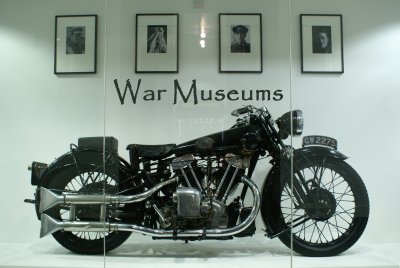
 |
The war-related museums I visited in London are the Imperial War Museum, its narrowly-focused branch, the Churchill Museum and Cabinet War Rooms, and the National Army Museum. (The main London IWM and the Army Museum are free museums; the Churchill Museum charges admission.) My World War II class took field trips to all three, and got a lot out of each visit. The IWM's "Children's War" exhibit made a big impression on them, as did the Holocaust Exhibition there, which is really excellent. At the Churchill Museum, we were very fortunate in getting a personal tour by one of the historians who actually set it up. He gave the students some great insights into "Winnie's" life, accomplishments, and foibles. (Photography isn't permitted in the Churchill Museum section, but it is in the War Rooms area; see those photos below.)
|
I only took a couple of pictures at the Army Museum (you can see them in this Flickr set) but it was a great museum as well, and the site of an inspiring talk given to the class by a lady who lived through the Blitz, evacuations from the city, and other traumas that had the students hanging on her every word. Here are the blog posts that cover my various visits to these museums. Yes, I made a lot of visits, partly because of the importance of the museums in my lesson plans. But I'd probably have toured them as frequently without the classes to plan for—they were just that good: |
Imperial War Museum
The IWM, which might just as accurately be called an anti-war museum, is an absolutely mesmerizing collection of artifacts dealing with the wrenching conflicts of the 20th century. (Its name perhaps might be misinterpreted as British hubris, but the word "imperial" was added to acknowledge the contributions made by soldiers from Commonwealth and colonial areas to the mother country's struggles, which it does very well.) It is perhaps most famous for its interactive exhibits on the World War I trench experience, and the World War II blitz, and these are very well-done and interesting. But I found the incredibly rich galleries to be the most rewarding aspects during my five visits to the Museum. I at least saw everything there, but wish I had had more time to read more explanatory material and learn even more about the artifacts displayed and the actions they represented. You can search the Museum's extensive online offerings here. Or search/browse their collections by subject under"Stories." |
The Museum is undergoing some facelifting, which you might not notice in the first photo on the left below, taken in early September. The impressive colonnaded front is actually just a curtain, covering the cleanup work being done beneath. In the picture on the right, taken in November, the sprucing up work has expanded to the building's cupola. By the way, the building has a very interesting history: the Museum only came into being after World War I, but the building is much older. It's the former Bethlem Royal Hospital, more commonly known as Bedlam! (Learn more about the history of the Museum here.) The poster in the middle is from the London Transport Museum and you can tell it refers to an earlier location for the IWM; the South Kensington station is near where it resided prior to moving to Bedlam in 1936. Now it's just a short walk from the Lambeth North underground station. |
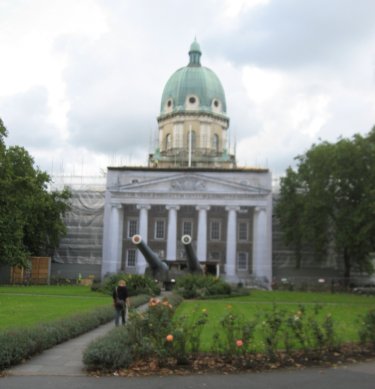 |
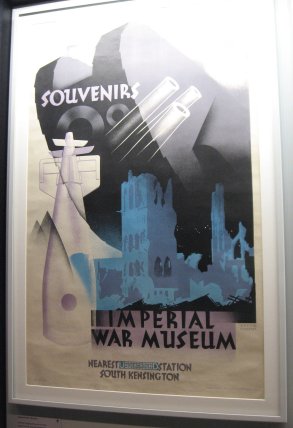 |
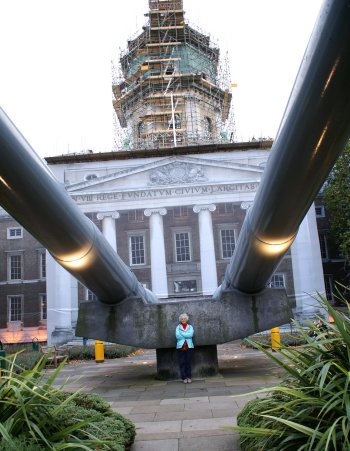 |
The main hall, or lobby, of the IWM, is full of interesting large artifacts from both World Wars. Perhaps the most impressive is this V2 rocket. During my mid-November visit, the base still contained Remembrance Day poppies, somewhat softening its horrifying bulk...
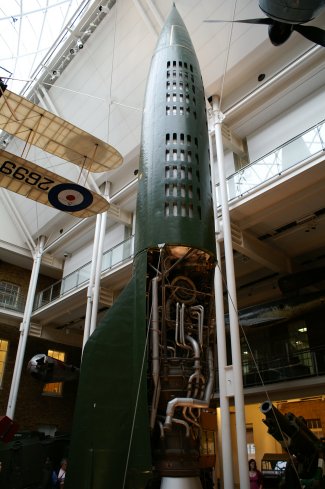 |
 |
More bombs are on displayin the IWM. On the left here is one of the incendiary bombs that wreaked so much havoc in London and other British cities during the Blitz. On the right is a V1 "flying bomb" or "doodlebug."
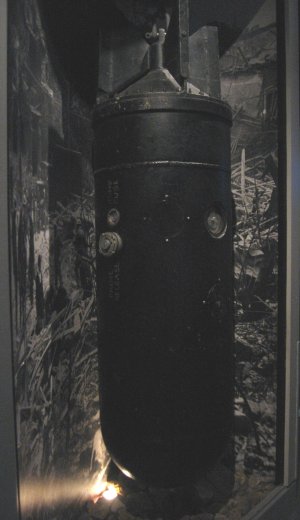 |
 |
I didn't take too many photos myself at the IWM—I was 'way too busy reading and reacting to the mountains of material and artifacts. But fortunately Henry did on his one visit, although he barely made it out of the main lobby in the hours we were there. Most of the photos here and in the Flickr set are his.
Here are exhibits dealing with World War I: me next to a western front ambulance vehicle in the main hall, a Battle of the Somme diorama, and me alongside some models in the "Trench Experience" exhibit, which is an amazing taste (and smell!) of what things were like in the hellish environment of this most heartbreaking of all wars.
 |
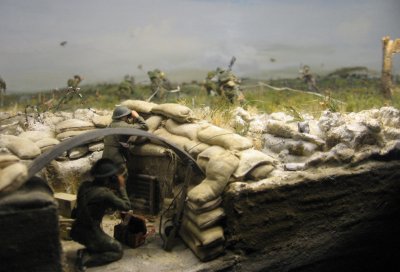 |
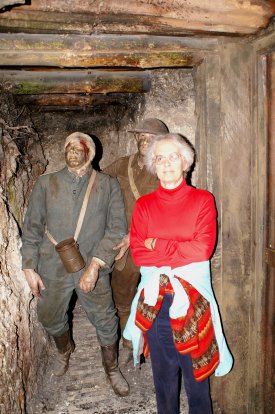 |
Here are some photos of the War Rooms complex, which became open to the public not long after the end of World War II. You can I had read about the meetings held here, the map room with the pins for the convoy vessels, and so much more high drama that took place in this warren of heavily sheltered offices and living space. It was a real thrill to tour it—twice! (Note: the various colorings of the different photos are results of different settings on mine and Henry's cameras; the light is low in the rooms and taking good pictures was difficult.)
On the left is a shot down one of the maze-like corridors. The little sign in one of the doorways on the left of the hall says "Fine and Warm." The sign was changed to let the folks stuck underground know what the weather was like up top. On the right is an aide's office. You might think that the models they have positioned in the offices and other rooms would be a cheesy touch, but they're well done and lend a surprising air of realism to the scenes.
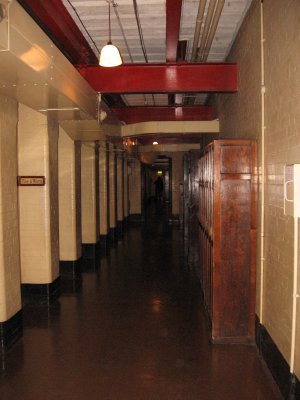 |
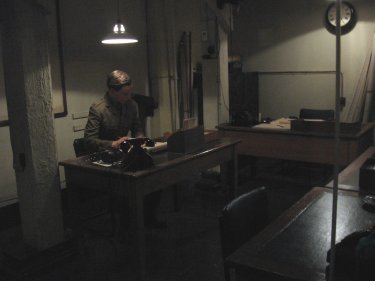 |
Here's the famous map room. On the left is an officer model in the act of updating the convoy pins, and on the right you can see the bank of phones set up to funnel important information to the planners below ground.
 |
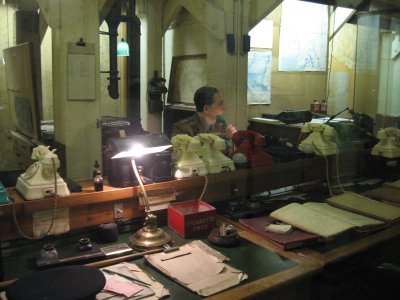 |
On the right here is the kitchen set up for the Churchills to make meals. We learned, however, that the great man and his wife didn't dine very often in the bunker. On the right are more officer models conferring in an office.
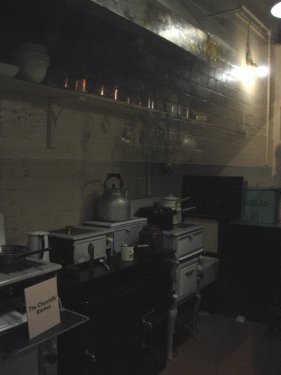 |
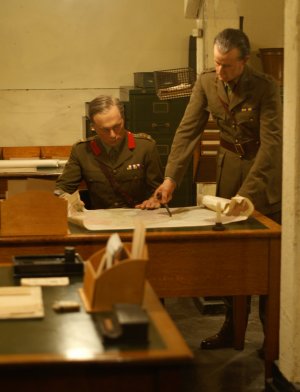 |
The IWM has more satellite locations. Two I did not get a chance to visit are IWM North, in Manchester, and the HMS Belfast, which I should have visited, since it's right in London. I had to prioritize my sight-seeing, though, even if I was in London for 3½ months! And I have toured other warship/museums in the U.S. so I decided to pass on the Belfast. However, another branch, the IWM Duxford (which is somewhat analagous to the Smithsonian's Air and Space Museum Annex) we did get to visit. You can see photos from that excursion in the East Anglia section of the website.
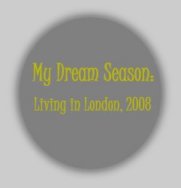 |
 |
 |
Back to Dream Season home • Back to London home • Back to Museums home